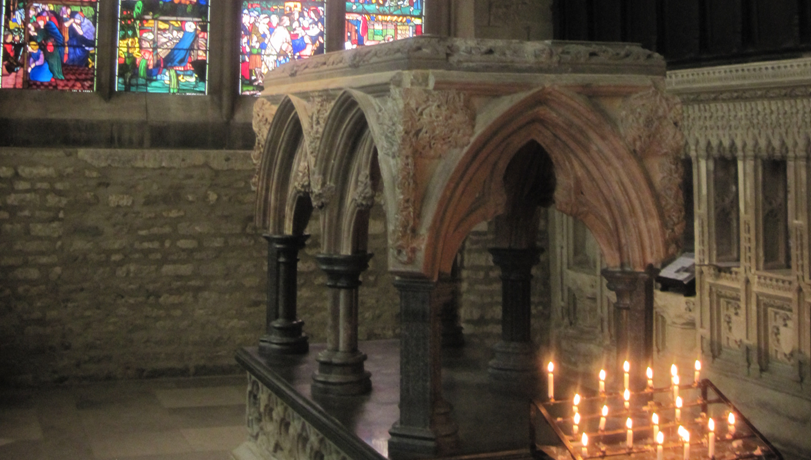 |
| A proccesion carrying the relics of St. William from the St. William window at York Minster. |
St. William FitzHerbert was born into a noble family possibly during the reign of King Henry I. He became chaplain to King Stephen in the 1130s when he also became the treasurer of the Chapter of York minster. After Archbishop Thurstan died in 1140, William was elected to the see by the canons of York with royal backing. But before William was consecrated, he was accused of several ecclesiastical sins that, as his Cistercian accusers insisted, should prevent his consecration. The matter was taken to the Pope the grounds being not only Williams morality but also that religious houses were allowed to be involved in diocesan elections since the Second Vatican Council, and that the Yorkshire Cistercians had been excluded from William's election. William swore an oath that cleared him of all charges of simony and bribery, and was consecrated Archbishop of York on 26 September of 1143. The next Pope, Eugene III, however, was himself a Cistercian and was persuaded to reopen the case by Bernard of Clairvaux. Eugene deposed William, who then retired to Winchester taking the Benedictine habit. After Eugene and the replacement archbishop died, William and King Stephen asked the new Pope, Anastasius IV, to restore his arch-episcopate. William was made Archbishop again and received the pallium. But not long after he returned to York he was poisoned by tainted wine at mass and died. He was buried at York and immediately venerated as a saint. In 1227, after several miracles were recorded at his tomb, he was canonized by Pope Honorius III, his body was elevated, and a shrine was built. At the time of his death, York Minster had no saint's shrine, as most of the saintly Archbishops of York were buried at surrounding monasteries so the shrine of St. William became very important to the life of the minster and subsequently became second largest shrine in the north of England by the early 16th century (surpassed by that of St. Cuthbert at Durham). In 1960 his relics were discovered in the crypt of the Cathedral and re-enshrined for modern day pilgrims.
 |
| The restored Shrine of St. William in York Minster...the mosaic in the back depicts William with the pallium. |

No comments:
Post a Comment